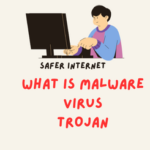Govt allots 5 MHz spectrum to upgrade Indian Railways security: Basics Explained

The Union Cabinet approved the allotment of a 5 MHz spectrum in 700 MHz frequency band to the Railways for public safety and security services at stations and in trains. The spectrum allocation is in line with the Railways’ objective to provide Long Term Evolution (LTE) based mobile train radio communication on its route. The railways currently rely on optical fibre for their communication network but with the allocation of fresh spectrum, it will be able to use high-speed radio on a real-time basis.
It will help in augmenting both communication and signalling networks of the railways. It will be used for modern signalling and train protection systems and ensure seamless communication between loco pilots and guards. It will enable the Internet of Things (IoT) based remote asset monitoring especially of coaches, wagons and locomotives and live video feed of CCTV cameras in the train coaches to ensure efficient, safer and faster train operations.
LEARNING FROM HOME/ WITHOUT CLASSES/ BASICS
LTE (Long Term Evolution) is a mobile communication standard. In the cellular network, mobile data can be transferred over the air in larger amounts and at higher speeds than was possible under earlier wireless communication standards. LTE is also referred to as “4G”, the fourth generation of mobile communication technology.
LTE uses MIMO (multiple input, multiple output) antenna technology. Thanks to its low latency, LTE enables the transmission of voice services (VoLTE: Voice over LTE) and video telephony via Internet Protocol, as well as supporting the use of time-critical applications, such as online games on your smartphone. It provides reduced latency, scalable bandwidth capacity and backward-compatibility with the existing Global System for Mobile communication (GSM) and Universal Mobile Telecommunications Service (UMTS) technology.
The Internet Protocol (IP) is a protocol, or set of rules, for routing and addressing packets of data so that they can travel across networks and arrive at the correct destination. Every device or domain that connects to the Internet is assigned an IP address, and as packets are directed to the IP address attached to them, data arrives where it is needed.
Internet of Things is a catchall phrase for all the various internet-connected devices that are not traditional computers. This includes everything from fitness trackers and smart watches to smart refrigerators, headphones, cameras, washing machines, cars, traffic lights, airplane engines, and home security systems.
Spectrum is the life-blood of a telecom operator – it’s literally a range of electromagnetic waves, and when we talk about telecom spectrum, we’re talking about the frequencies that are used to transmit sound and data across the country to our phones.





0 Comments